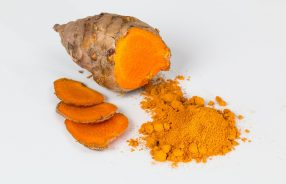How do you know if you’re gay?
But it can be tough to figure it all out, so we’ve created a quiz to help you explore how you feel about your sexuality and start to find some answers within yourself.
Quizzes Are More Fun With Friends
You might be more drawn to one gender or another. If gender doesn\u2019t matter to you at all when it comes to who you like, you could explore the label \u201cpansexual\u201d too.
It\u2019s even possible to have romantic feelings for a certain gender but no physical attraction, or vice versa. You don\u2019t have to label yourself if you don\u2019t want to, and there\u2019s no set timeline to figure it out.
What do the letters in LGBTQ+ stand for? These terms don’t have universal definitions since everyone who identifies with a certain label gets to pick what that identity means to them. After all, it’s hard to define a key part of someone’s experience in a single word! But to give you the basics of LGBTQ+ terms, we’ve put together a glossary of common terms you might see or hear.
Asexual (“ace”) – Asexual refers to a lack of interest in sex or sexual contact with other people. People who use this umbrella term might experience a range of sexual attraction, from zero desire for sex, to occasional sexual attraction, or attraction only alongside a strong emotional bond (demisexuality).
Gay – While this adjective has historically described men who are attracted to other men, the term now is used to refer to anyone who experiences romantic, emotional, or physical attraction to people of the same gender.
Gender expression – Gender expression is the external way people convey their gender identity through behavior and physical appearance like clothing choices, body characteristics, speech patterns, etc.
Intersex – Intersex people are born with anatomy or sex characteristics that don’t fit into the “male” or “female” binary boxes. They may or may not identify with the sex they are assigned at birth (just like non-intersex people).
Lesbian – Women and non-binary people use this term to identify as people who are emotionally, romantically, or sexually attracted to other women.
fordelene med ГҐ date noen fra et annet land
Pansexual (“pan”) – Pansexual refers to people who are attracted to any/all genders or who don’t limit their attraction to the confines of the gender binary. Some pansexual folks might say that gender and sex are not determining factors in their attraction.
Non-binary – Non-binary refers to gender identity rather than sexual orientation. People who identify as non-binary express their gender and identity in a way that lives outside of and inherently rejects the socially-constructed gender binary. This term can include people who are genderqueer or gender expansive too.
Queer – This is an umbrella term that includes a variety of gender & sexual identities that fall outside of heteronormativity and the limitations of gender binary systems. While the word queer was once a slur, many people in the LGBTQ+ community have reclaimed the term to be radical and all-inclusive.
Questioning – Questioning is both a noun and a verb. It describes periods of personal reflection and exploration involved in the process of discovering sexuality, gender identity, and gender expression. Additionally, it can be the second Q to queer in LGBTQQ, to denote the inclusion of folks questioning their identities.
Sexual orientation – Sexual orientation describes a person’s inherent physical, emotional, or romantic attraction towards other people, often based on their gender identity and/or expression. It is often used interchangeably with attraction and sexual identity.
Am I Gay?
Transgender (“trans” or “trans*”) – Transgender is an umbrella term that includes people whose gender identity and/or gender expression transgress the boundaries of gender and can differ from the sex they were assigned at birth. Since gender identity and sexual orientation are separate, transgender people can identify as straight, gay, lesbian, bisexual, etc. The spelling trans* is sometimes used to include all gender-queer or expansive identities.





